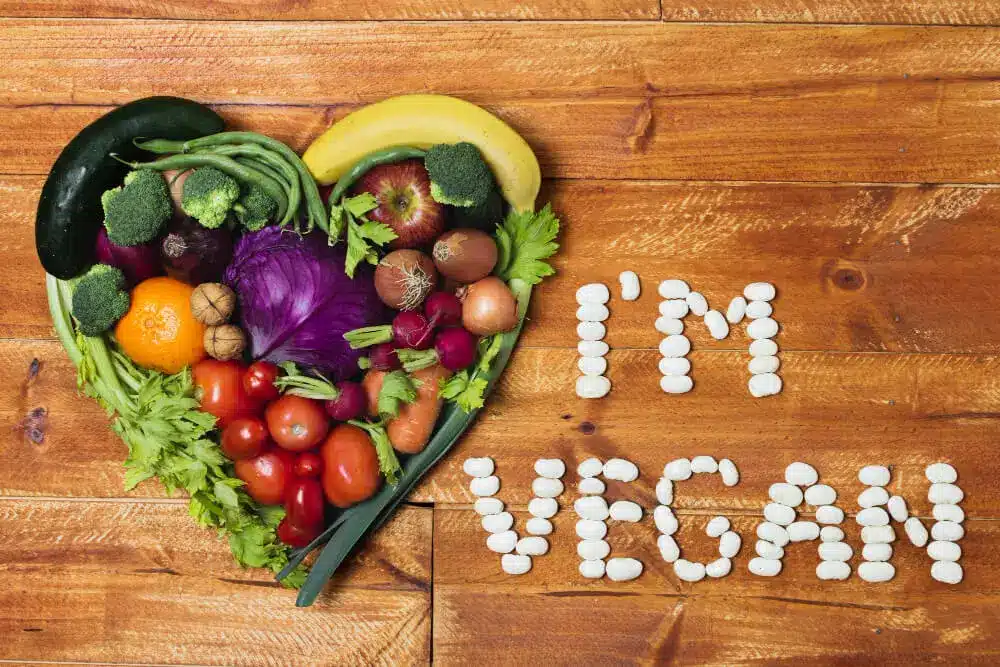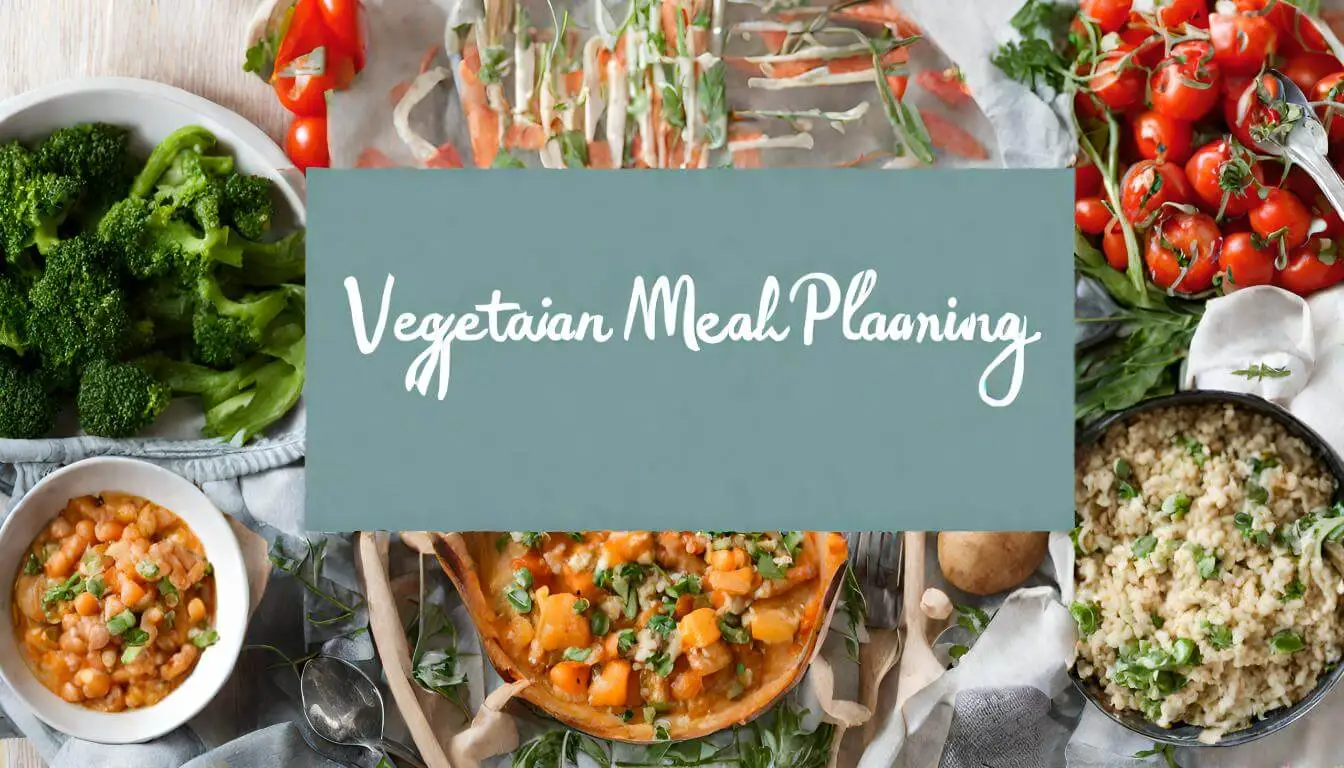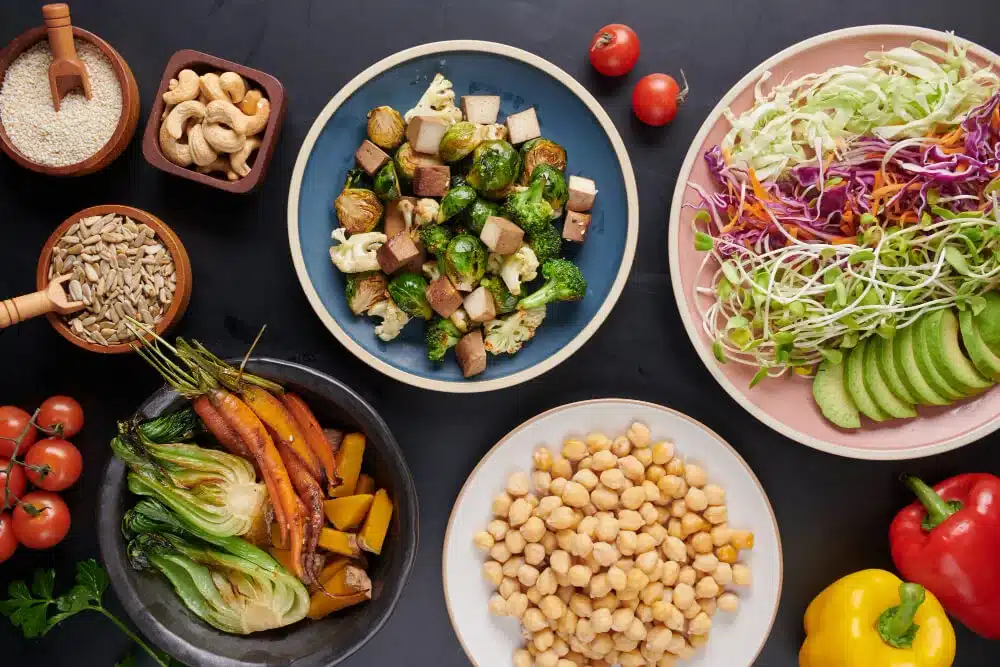Embarking on a vegetarian lifestyle brings with it the quest for meals that are not only nutritious but also satisfying. In this comprehensive guide, we delve into the world of most filling vegetarian food, exploring a variety of dishes that promise both flavor and fullness. Whether you’re a seasoned vegetarian or new to plant-based eating, understanding which foods can keep you satiated is key to enjoying a balanced and fulfilling diet. From protein-packed legumes to hearty grains, this article unveils the secrets to creating satisfying vegetarian meals that nourish and delight.
Introduction to Vegetarian Foods and Their Benefits
In recent years, vegetarianism has surged in popularity, not just as a dietary choice but as a lifestyle. Embracing a vegetarian diet means exploring a world of diverse flavors, nutrient-rich foods, and numerous health benefits. This lifestyle choice is driven by various factors, including health, ethical beliefs, and environmental concerns. For those new to vegetarian cooking, our comprehensive Vegetarian Cooking Guide offers essentials and global recipes to get started.
The Rise of Vegetarianism
The shift towards vegetarianism can be attributed to a growing awareness of the health benefits associated with plant-based diets, as well as increasing concerns about animal welfare and environmental sustainability. A vegetarian diet typically includes a variety of fruits, vegetables, grains, legumes, nuts, and seeds. The exclusion of meat and other animal products presents an opportunity to discover an array of wholesome and nutritious plant-based foods.
Health Benefits of a Vegetarian Diet
A well-planned vegetarian diet is not only nutritious but can also aid in the prevention and treatment of certain diseases. Vegetarian diets are associated with a lower risk of chronic diseases such as heart disease, hypertension, diabetes, and certain types of cancer. This is largely due to the diet’s emphasis on fruits, vegetables, whole grains, and legumes, which are high in essential nutrients, fiber, and antioxidants, but low in saturated fat. Exploring the health benefits of vegetarian diets
Environmental and Ethical Considerations
Apart from health benefits, vegetarianism is often chosen for ethical and environmental reasons. The production of plant-based foods generally requires fewer natural resources and results in lower greenhouse gas emissions compared to meat production. Additionally, many people choose vegetarianism to avoid the ethical dilemmas associated with animal farming and slaughtering.
As we delve deeper into the world of vegetarian foods, it becomes evident that this diet can be both diverse and satisfying. The key to a fulfilling vegetarian diet lies in understanding the nutritional value of plant-based foods and how to incorporate them into meals creatively and deliciously.
Nutritional Profile of Vegetarian Foods

A common challenge in a vegetarian diet is ensuring a diverse intake of protein. Including a variety of most filling vegetarian foods like legumes and whole grains can help meet your protein needs effectively.
Protein in a Vegetarian Diet
Protein is a vital nutrient necessary for muscle repair, bone health, and overall bodily functions. Vegetarian sources of protein include legumes (such as lentils, beans, and chickpeas), soy products (like tofu and tempeh), nuts, seeds, and whole grains. These foods not only offer ample protein but are also rich in other nutrients like fiber, vitamins, and minerals.
Essential Vitamins and Minerals
Vegetarians need to be mindful of certain nutrients that are predominantly found in animal products. These include Vitamin B12, Vitamin D, Iron, Calcium, and Omega-3 fatty acids. Fortunately, many plant-based foods and fortified products can help meet these nutritional needs. Leafy green vegetables, fortified cereals, plant milks, nuts, and seeds are excellent sources of these essential nutrients.
The Role of Fiber
Fiber plays a significant role in a vegetarian diet. It aids in digestion, helps in maintaining a healthy weight, and reduces the risk of chronic diseases. Vegetables, fruits, whole grains, legumes, nuts, and seeds are all rich in fiber. Including a variety of these foods in your diet ensures a good intake of both soluble and insoluble fiber.
Healthy Fats
Fats are essential for brain health, energy, and the absorption of certain vitamins. Vegetarian diets can include healthy fats from sources like avocados, nuts, seeds, and plant oils. These fats are beneficial for heart health and can help in reducing inflammation.
Balancing these nutrients is crucial for a healthy vegetarian diet. It involves not only choosing a variety of foods but also understanding how to combine them to maximize nutrient absorption. For instance, consuming vitamin C-rich foods (like citrus fruits) with iron-rich plant foods (like leafy greens) can enhance iron absorption.
By exploring these ideas, you’ll discover that incorporating most filling vegetarian foods into your daily meals can be both enjoyable and beneficial for your health.”
Top Choices for Satiating Vegetarian Meals
When transitioning to a vegetarian diet, one of the primary concerns is finding foods that are not only nutritious but also satisfying and filling. Luckily, many vegetarian dishes, known for their high satiety levels, keep you feeling full and energized for extended periods. Here, we explore some of the most filling vegetarian foods and their unique nutritional benefits.
Legumes: A Powerhouse of Protein and Fiber
Legumes, including beans, lentils, and chickpeas, are among the most filling foods in a vegetarian diet. They are an excellent source of protein, which is crucial for muscle repair and growth. Additionally, legumes are high in dietary fiber, which aids in digestion and prolongs the feeling of fullness. They are also rich in essential nutrients like iron, potassium, and B vitamins.
- Lentils: Packed with protein and fiber, lentils are incredibly versatile and can be used in soups, stews, salads, and more.
- Chickpeas: High in protein and fiber, chickpeas are perfect for making hummus or adding a satisfying crunch to salads when roasted.
Whole Grains: More Than Just Carbs
Whole grains, such as quinoa, oats, barley, and brown rice, are excellent sources of complex carbohydrates. Additionally, unlike refined grains, whole grains are rich in fiber. This fiber content helps in maintaining a steady blood sugar level and keeps you feeling full longer. Furthermore, they also contain essential nutrients like B vitamins, iron, magnesium, and selenium.
- Quinoa: A complete protein containing all nine essential amino acids, quinoa is also high in fiber and various vitamins and minerals.
- Oats: Ideal for a filling breakfast, oats provide long-lasting energy and are high in beta-glucan, a type of soluble fiber that aids in digestion and heart health.
Nuts and Seeds: Nutrient-Dense and Satiating
Nuts and seeds are small but mighty sources of nutrition. They provide healthy fats, proteins, fiber, vitamins, and minerals. Including a handful of nuts or seeds in your diet can help in weight management and provide a sustained energy release.
- Almonds: Rich in protein, healthy fats, and fiber, almonds are a great snack to keep hunger at bay.
- Chia Seeds: High in omega-3 fatty acids and fiber, chia seeds can absorb water and expand, which helps in creating a feeling of fullness.
Vegetables: High in Nutrients, Low in Calories
Certain vegetables are particularly filling due to their high water and fiber content. Incorporating a variety of these vegetables into your meals can add volume without a lot of calories.
- Broccoli: Rich in fiber and protein, broccoli is a filling vegetable that’s also packed with vitamins and minerals.
- Sweet Potatoes: Their high fiber content and complex carbohydrates make sweet potatoes a satisfying and nutritious choice.
These filling vegetarian foods not only provide essential nutrients but also help in creating meals that are satisfying and flavorful. By including a variety of these foods in your diet, you can enjoy a fulfilling vegetarian lifestyle without feeling deprived.
Creative Ways to Include Satisfying Plant-Based Options
When incorporating most filling vegetarian foods into your diet, creativity and balance are key. Here’s how you can make your vegetarian meals both nutritious and satisfying.
Creating satisfying vegetarian meals is all about balance and variety. Incorporate a mix of protein-rich legumes, whole grains, and a variety of vegetables into your meals. For inspiration, explore the world’s most famous vegetarian dishes in our article on Exploring the World’s Most Famous Vegetarian Dishes.
Creative Cooking with Legumes and Grains
Legumes and grains form the backbone of many vegetarian dishes due to their high protein and fiber content. They can be used in a variety of ways:
- Soups and Stews: Lentils and beans are perfect for hearty soups and stews. They absorb flavors well and provide a satisfying texture.
- Salads: Quinoa and chickpeas add substance to salads, making them more filling and nutritious.
- Burgers and Patties: Mashed beans or lentils can be used to make delicious vegetarian burgers or patties.
Experimenting with Nuts and Seeds
Nuts and seeds are great for adding crunch and nutrition to meals:
- Toppings: Sprinkle chopped nuts or seeds over salads, yogurt, or oatmeal for added texture and nutrients.
- Homemade Nut Butters: Blend almonds, cashews, or peanuts to make homemade nut butters, perfect for spreading on toast or adding to smoothies.
Making Vegetables the Star
Vegetables can be transformed into the main course with a few simple techniques:
- Roasting: Roasting vegetables like broccoli, cauliflower, and sweet potatoes brings out their natural sweetness and makes them more satisfying.
- Stir-Fries: Combine a variety of vegetables with tofu or tempeh for a quick and filling stir-fry.
Balancing Your Plate
A balanced vegetarian meal should include a good mix of protein, carbohydrates, and healthy fats:
- Protein: Ensure each meal includes a protein source, such as legumes, tofu, or quinoa.
- Carbohydrates: Opt for whole grains like brown rice or whole wheat pasta.
- Healthy Fats: Include sources of healthy fats like avocados, nuts, or olive oil.
Planning and Preparing Meals
Meal planning is key to maintaining a balanced vegetarian diet:
- Batch Cooking: Prepare legumes and grains in bulk to save time and ensure you always have a base for your meals.
- Snack Preparation: Keep healthy snacks like nuts, seeds, and chopped vegetables on hand for when hunger strikes.
By exploring these ideas, you’ll discover that incorporating most filling vegetarian foods into your daily meals can be both enjoyable and beneficial for your health.
Bonus Recipe: Hearty Vegetarian Chili – A Flavorful and Filling Treat

As a delightful bonus for our readers exploring the fulfilling world of vegetarian cuisine, we present a recipe that perfectly encapsulates the essence of a hearty, nutritious, and satisfying meal. Our Hearty Vegetarian Chili is not just a dish; it’s a celebration of the rich flavors and nutritional benefits that a plant-based diet offers. Packed with protein-rich legumes, a variety of vibrant vegetables, and aromatic spices, this chili is designed to satisfy your taste buds and keep you feeling full and energized. Whether you’re a long-time vegetarian or just experimenting with plant-based meals, this recipe is an excellent addition to your culinary repertoire. Let’s dive into the warmth and richness of this Hearty Vegetarian Chili, a dish that promises to be a crowd-pleaser and a comforting treat for any day of the week.
Navigating Common Obstacles in a Plant-Based Diet

While a vegetarian diet offers numerous health benefits and is environmentally sustainable, some individuals may face challenges in ensuring variety, adequacy, and satisfaction in their meals. However, here are some common challenges and strategies to overcome them. Consequently, these strategies can help in ensuring a balanced and enjoyable vegetarian lifestyle.
Ensuring Adequate Protein Intake
One of the main concerns in a vegetarian diet is getting enough protein. Protein is essential for muscle repair, bone health, and overall bodily functions.
- Diverse Protein Sources: Incorporate a variety of protein-rich foods like legumes, tofu, tempeh, nuts, seeds, and whole grains into your diet. This not only ensures adequate protein intake but also provides a range of other nutrients.
- Protein-Rich Snacks: Opt for snacks that are high in protein, such as Greek yogurt, nut butters, or hummus with vegetables, to keep your protein levels up throughout the day.
Meeting Vitamin and Mineral Requirements
Vegetarians need to be mindful of certain nutrients that are less abundant in plant-based foods, such as Vitamin B12, Iron, Calcium, and Omega-3 fatty acids.
- Fortified Foods: Include fortified foods in your diet, such as plant milks and cereals, which are often enriched with these nutrients.
- Supplements: Consider supplements, especially for nutrients like Vitamin B12, which is primarily found in animal products.
Dealing with Limited Food Choices
Some vegetarians may find their food choices limited, especially when dining out or in social settings.
- Research and Planning: Research menus in advance when eating out and look for restaurants that offer a good selection of vegetarian options.
- Communicate Dietary Preferences: Don’t hesitate to communicate your dietary preferences when attending social gatherings or events. Most hosts are accommodating and willing to provide vegetarian options.
Maintaining Interest and Variety
Keeping a vegetarian diet interesting and varied is crucial to avoid monotony and ensure a wide range of nutrients.
- Experiment with International Cuisines: Many cultures around the world have a rich tradition of vegetarian cooking. Exploring international cuisines can introduce you to new flavors and ingredients.
- Try New Recipes: Regularly seek out and try new vegetarian recipes to keep your meals exciting and diverse.
Balancing Convenience and Health
In today’s fast-paced world, finding quick yet healthy vegetarian options can be a challenge.
- Meal Prepping: Dedicate time each week to meal prep. This ensures you have healthy, homemade meals ready to go, even on your busiest days.
- Healthy Convenience Foods: Look for healthy vegetarian convenience foods, such as pre-cut vegetables, canned beans, or frozen veggie burgers, for when time is short.
Final Toughts
Adopting these strategies ensures that your vegetarian diet is not only diverse and nutritious, but also rich in most filling vegetarian foods. Consequently, this approach thereby caters to both your health and taste preferences.


3 thoughts on “Exploring the World of Vegetarian Cuisine: Discovering the Most Filling Foods”